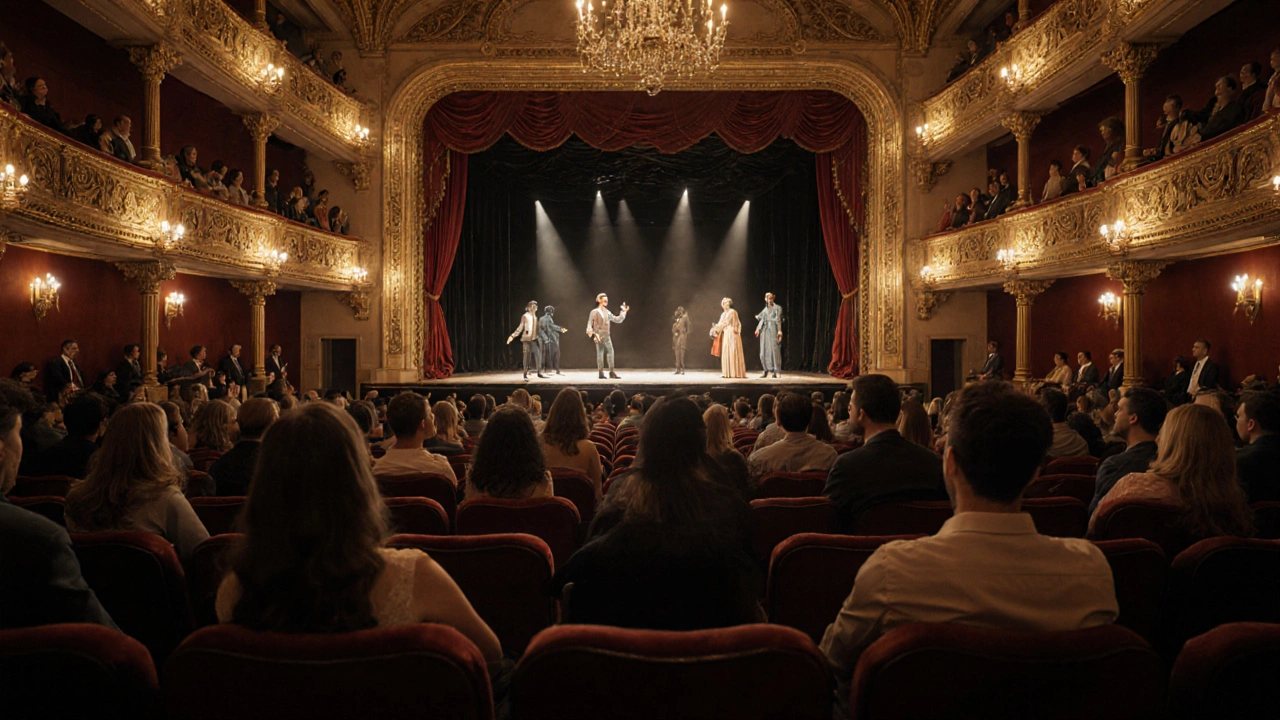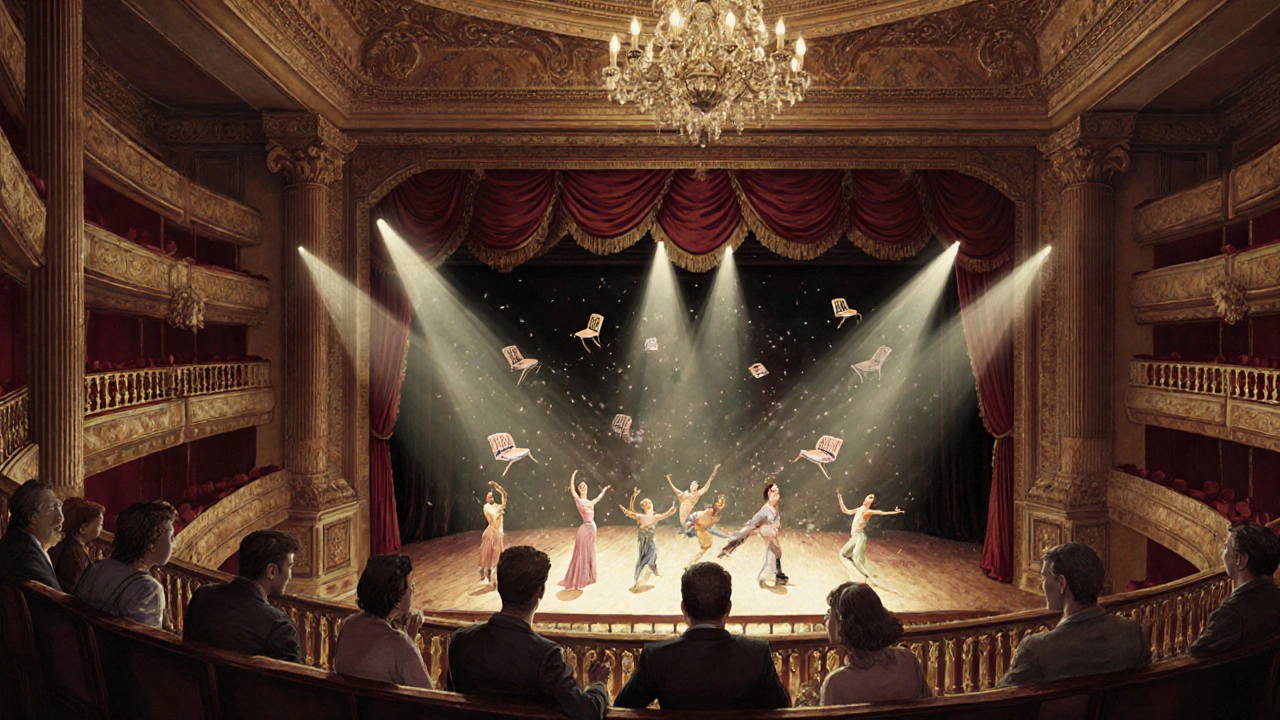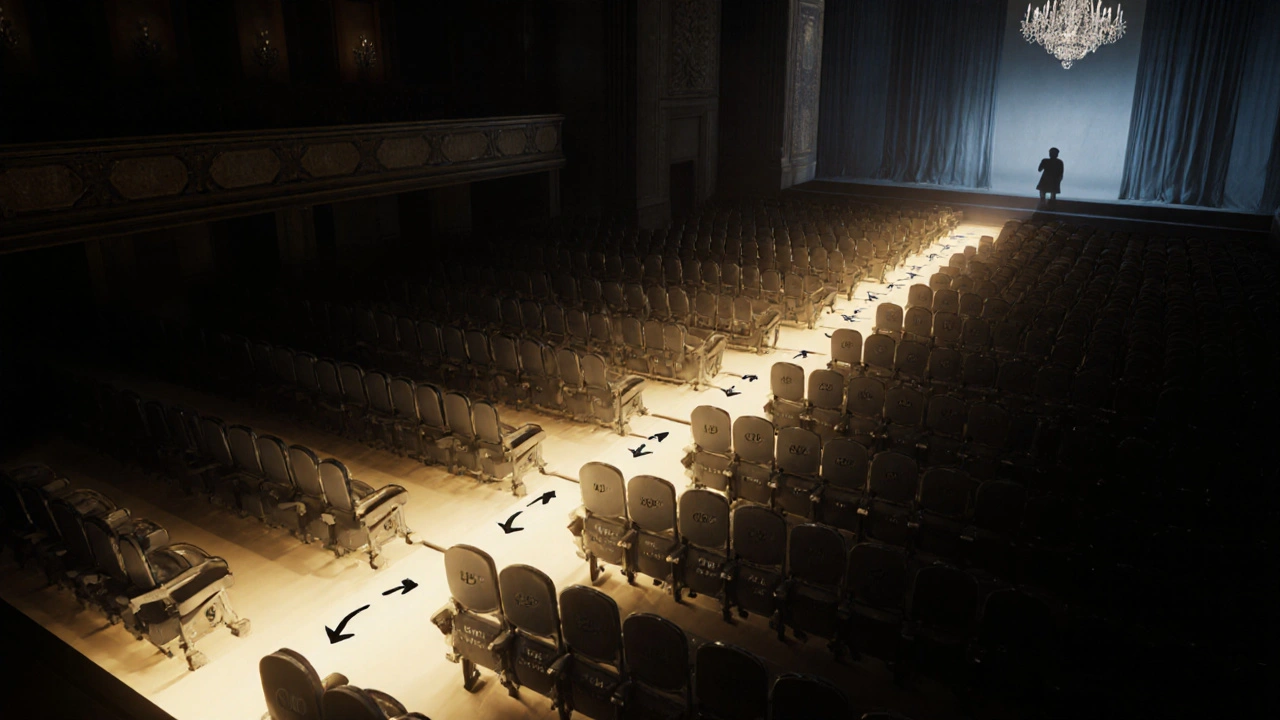
Walking into a West End theatre for the first time can feel like stepping into a maze of rows, levels, and price tags. You want the best view, sure - but not if it means paying £200 for a seat that barely shows the actors’ faces. The truth? The best seats in London theatres aren’t always the most expensive ones. They’re the ones that let you see the performance clearly, hear every line, and feel the emotion - without breaking the bank.
Why Seat Choice Matters More Than You Think
Some people assume the front row is the best. It’s not. Others think the balcony is where the magic happens. Sometimes, yes - but only if you know which balcony. A bad seat can turn a brilliant performance into a frustrating night. You might miss facial expressions, struggle to catch lyrics, or spend half the show craning your neck. In a West End show like Les Misérables or The Lion King, where every gesture and sound matters, your seat can make or break the experience.
It’s not just about price. It’s about sightlines - the unbroken path from your eyes to the stage. Even if you’re in the middle of the stalls, a pillar, a high balcony overhang, or an angled seat can block your view. The same goes for sound. In older theatres like the Adelphi or the Drury Lane, acoustics vary wildly by row. Some seats are so far back or to the side, the actors sound like they’re whispering through a wall.
The Stalls: Where the Magic Usually Lives
For most shows, the stalls - the ground floor seating - are your safest bet. Rows 6 to 12, center section, are often called the "sweet spot." You’re close enough to see every blink, every tear, every flicker of a costume detail, but far enough back that you’re not staring up at the actors’ nostrils. In theatres like the Palace Theatre or the Prince of Wales, these rows give you a perfect 30-degree angle to the stage.
Don’t avoid the front rows just because they’re pricey. Rows 1 to 5 can be fantastic for musicals with big choreography - think Wicked or Hamilton - where you want to feel the energy. But avoid them if the show relies on subtle acting. In The Curious Incident of the Dog in the Night-Time, you’ll miss half the nuance if you’re too close.
Watch out for side seats. Even in the stalls, seats near the aisles on the far left or right can twist your neck. In the Queen’s Theatre, seats in the 10th row, left side 1-5, have a 45-degree angle. You’ll see the action, but you’ll miss the reactions of actors facing the other way.
The Royal Circle: The Hidden Gem
Many people skip the Royal Circle - the first balcony - because they think it’s too high up. That’s a mistake. In theatres like the London Palladium or the Victoria Palace, the Royal Circle offers one of the best overall views. The slope is steep, so even the back rows have a clear, elevated view of the whole stage. You see the full choreography, the set design, the lighting - everything. And the sound? Often better than the front stalls because you’re not right above the orchestra pit.
Rows A to F in the Royal Circle are where you’ll find the best value. Prices here can be 40% lower than front stalls, but the view is just as strong. In Matilda, the Royal Circle lets you see the entire schoolroom set, the flying chairs, and the kids’ expressions without craning your neck. It’s the perfect blend of perspective and price.

The Upper Circle: For Budget-Conscious Viewers
The Upper Circle is where you go if you want to see the show - not sit in it. These seats are high, sometimes steep, and the legroom is tight. But if you’re on a budget and the show is a spectacle - think The Phantom of the Opera with its chandelier, or Wicked with its flying broomsticks - the Upper Circle can be a steal.
Best bets? Rows A to D, center. Avoid the very back rows (J and beyond) in older theatres like the Adelphi or the Shaftesbury. The ceiling overhang can cut off your view of the lower stage. In the Lyceum, the Upper Circle has a slight curve, so seats on the far left and right are angled away from the action. Stick to the center 10 rows for the clearest view.
One pro tip: On weekdays, the Upper Circle often has last-minute discounts. If you’re flexible, show up an hour before curtain and ask for standby tickets. You might walk out with a £25 seat in the front of the Upper Circle - a view that rivals £150 stalls.
Boxes and Side Seats: The Trap You Should Avoid
Theatre boxes - those little enclosed areas on the sides - look fancy. They’re often marketed as "exclusive." But unless you’re seeing a play with a single focal point - like a one-person monologue - avoid them. In most musicals and ensemble shows, you’ll only see half the stage. In Les Misérables, you’ll miss the barricade scenes. In Hamilton, you’ll miss half the choreography. The view is like watching a movie with half the screen covered.
Same goes for side seats in the stalls or circle. Even if they’re cheap, you’re paying for a partial experience. In the Gielgud Theatre, side seats in the Royal Circle are so angled that actors turn their backs to you for 60% of the show. You’ll hear the lines, but you won’t feel the performance.
How to Check Sightlines Before You Buy
Most theatre websites now have interactive seat maps. Look for the "View from this seat" feature. Click on any seat - it’ll show you a photo or video of what you’ll actually see. In the Novello Theatre, you can even see how much of the stage is blocked by the balcony above.
If the site doesn’t have this, search YouTube for "[show name] theatre seat view [row number]." Fans often post real footage from their seats. For example, search "Wicked Royal Circle Row C view" - you’ll find videos that show exactly what you’re buying.
Also, check the theatre’s seating plan for pillars. Older theatres like the Her Majesty’s have support columns that block views from certain rows. Look for red X’s or warnings on the map. If a seat is marked "partial view," it’s not worth the risk - even if it’s half price.

Best Value Seats by Theatre
Here’s what works best in the top 5 West End theatres right now:
| Theatre | Best Value Seats | Average Price Range | Why It Works |
|---|---|---|---|
| London Palladium | Royal Circle, Rows A-F, Center | £60-£90 | Unobstructed view of stage and lighting effects; excellent acoustics |
| Prince of Wales | Stalls, Rows 7-10, Center | £80-£120 | Perfect balance of proximity and angle for intimate dramas |
| Victoria Palace | Royal Circle, Rows B-E, Center | £55-£85 | Clear view of choreography and set changes; no overhang issues |
| Her Majesty’s | Upper Circle, Rows A-D, Center | £40-£70 | Best for Phantom’s chandelier and crowd scenes; no pillar obstruction |
| Queen’s Theatre | Stalls, Rows 8-12, Center | £70-£110 | Optimal sightline for ensemble shows like Hadestown |
When to Book and How to Save
Book early for weekend shows - especially if you want the sweet spot. But if you’re flexible, wait. Many theatres release discounted tickets 48 hours before the show. The TKTS booth in Leicester Square offers same-day deals - often 30-50% off. You might get a £120 seat for £60.
Sign up for theatre newsletters. The Really Useful Group (which runs Phantom, Wicked, and Les Mis) sends exclusive early access to members. You’ll get first dibs on good seats before they go on sale to the public.
Student and under-26s can use Royal National Theatre’s £25 ticket scheme at most West End venues. Just show your ID. Some shows also have "Rush" tickets - 20-30 seats released an hour before curtain, usually in the front of the Upper Circle.
Final Rule: See the Show, Not the Seat
The best seat doesn’t have to be the most expensive. It doesn’t even have to be the center. It just has to let you feel the story. If you’re watching Les Misérables, you want to see the tears on Fantine’s face. If it’s Hamilton, you want to catch the rhythm in the dancers’ steps. A £70 seat in the Royal Circle can give you that. A £180 front-row seat might leave you with a crick in your neck and a headache from the spotlight.
Choose for sight, not status. Choose for clarity, not cost. And if you’re ever unsure - watch a YouTube video from that seat first. You’ll thank yourself later.
Are the front row seats in West End theatres worth it?
Front row seats are only worth it for high-energy musicals with lots of movement, like Hamilton or Wicked. For dialogue-heavy plays or shows with subtle acting, you’ll miss facial expressions and feel overwhelmed by the proximity. You’re better off in rows 6-10.
Is the Royal Circle better than the stalls?
For most musicals and large-scale productions, yes. The Royal Circle gives you a clear, elevated view of the entire stage, including lighting and set changes. It’s often cheaper than front stalls and has better acoustics because you’re not right above the orchestra. For intimate dramas, stalls are better - but only if you pick the right rows.
Do theatre boxes offer the best experience?
No. Theatre boxes are designed for privacy, not performance. You’ll miss half the stage in most shows. Even if you’re watching a solo actor, you’ll lose sight of stage movement and lighting cues. Save boxes for special occasions - not for your first West End show.
How can I tell if a seat has a blocked view?
Check the theatre’s interactive seat map for "partial view" warnings. Look for pillars - they’re often marked with red X’s. Search YouTube for the show name plus the row and section. Many fans post real footage. If the view looks like you’re watching through a keyhole, skip it.
Are last-minute tickets worth it?
Absolutely - if you’re flexible. The TKTS booth in Leicester Square and theatre standby lists often have excellent seats in the Royal Circle or Upper Circle for half price. You might get a £90 seat for £45. Just show up at least an hour early and ask for the best available.